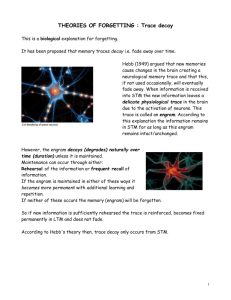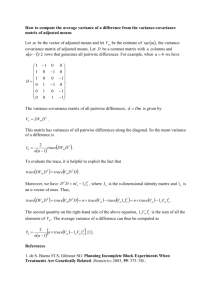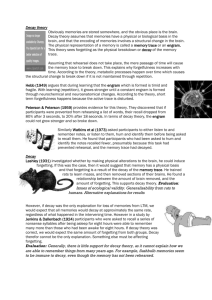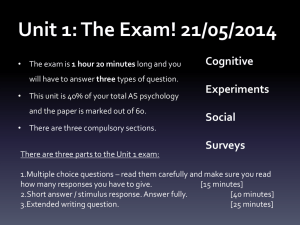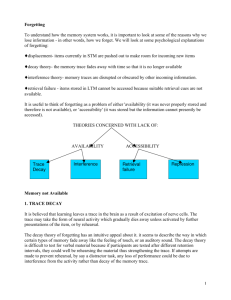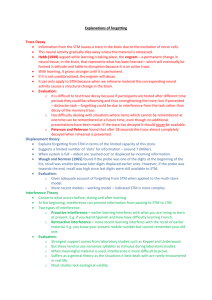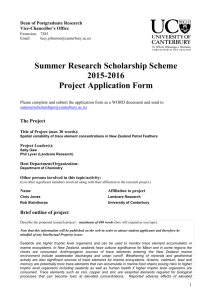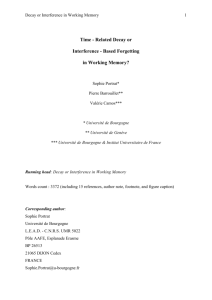Forgetting Theory 2: Trace Decay
advertisement
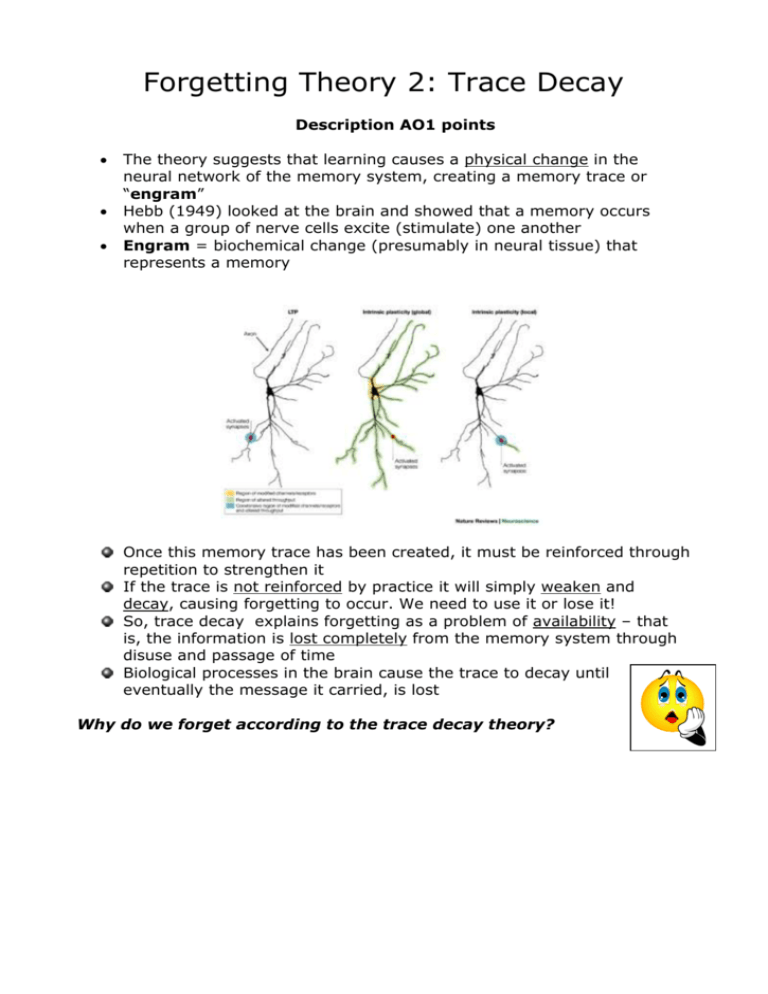
Forgetting Theory 2: Trace Decay Description AO1 points The theory suggests that learning causes a physical change in the neural network of the memory system, creating a memory trace or “engram” Hebb (1949) looked at the brain and showed that a memory occurs when a group of nerve cells excite (stimulate) one another Engram = biochemical change (presumably in neural tissue) that represents a memory Once this memory trace has been created, it must be reinforced through repetition to strengthen it If the trace is not reinforced by practice it will simply weaken and decay, causing forgetting to occur. We need to use it or lose it! So, trace decay explains forgetting as a problem of availability – that is, the information is lost completely from the memory system through disuse and passage of time Biological processes in the brain cause the trace to decay until eventually the message it carried, is lost Why do we forget according to the trace decay theory? Evaluating the trace decay theory of forgetting – AO2 points - The problem is that we do recall things we have not thought about for a long time. For example we can ride a bike after a long period. We have not been renewing the physical memories in the meantime, but the memory is still there - Sometimes, after being presented the right cues, memories are triggered and long-forgotten memories remembered - Many elderly people can recall incidents from their youth in great detail. Unless they have recalled the instance many times throughout their lives, the trace should have decayed - If the trace decay theory is correct, and you hadn’t played the guitar for 20 years then not only would you be unable to recall the chord sequence for a particular song, but it would also take you as long to learn the song the second time as it did the first. This simply isn’t true. - People under hypnosis can often recall things that they haven’t thought about for years, so their traces may still be there - Trace decay cannot explain why some people seem to have poor recall of even recent events, while others have incredible memories going back for decades. Why are there these huge individual differences? + Peterson & Peterson (1959) Had participants recall trigrams after varying intervals During rehearsal an Interference task was given (counting backwards in threes) to prevent rehearsal They found less that 10% of information was recalled after 18 seconds This is evidence for trace decay in STM. Participants weren’t able to practice/repeat the information/memory, and so the memory traces decayed - However, this was a laboratory experiment, so the study involved artificial tasks and an unnatural setting, and therefore lacked ecological validity. So the results may not be valid for the “real world”, and therefore this study cannot support the trace decay theory of forgetting
